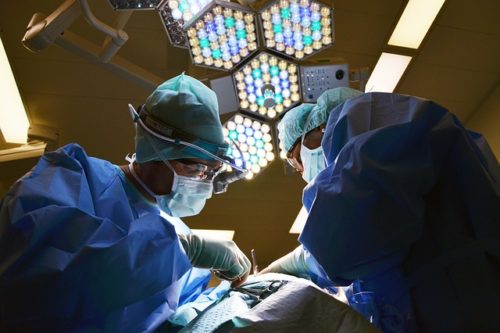Magic surgical eye
Many specialists in the world call the technique the magic surgical eye.
It is a promising new technology allow surgeons to perform less invasive surgical procedures with smaller incisions, less operative bleeding, faster recovery time and shorter hospital stays.
Its official title is Robotic Spinal Surgery approved by FDA, USA and get a 99.70% accuracy in the surgical outcomes, enhanced patient experience and greater value to patients.
According to specialized sources these procedures are performed with less radiation exposure to patients and health care providers. Robot-guidance also can increase the accuracy and safety of surgical procedures allowing for better outcomes and a healthier you.
The robotic guidance system allows surgeons to perform many types of spine surgery, from the simplest to the most complex. The technique is expanding rapidly even by recognized health tourism destinations.
One of these is the Vejthani Hospital, in Thailand. To date over 100 robotic spinal surgeries have been performed at Vejthani Hospital affirming Vejthani Hospital’s reputation as «The King of Bones and Joints».
Dr. Pattara Kosanunt, Spine Surgeon at Vejthani Hospital stated that “This technology is like the magic eye, designed to introduce a much greater degree of accuracy to spinal surgery, thereby reducing the risk of screw misplacement”.
Robots for magic surgical eye
Using the robot, the well-experienced surgeon stays in control of the surgery and places the screws with hands while the robot provides a guidance system increasing the degree of precision.
Medical institutions of great reputation in the United States that already use the method estimate that are many the benefits of the Robot-Guided Spine Surgery. The surgery has many advantages that lead to a faster recovery time, ultimately returning patients to their active lifestyles.
This includes improved surgical accuracy; smaller incisions; less risk for surgical complications; less exposure to radiation and shorter hospital stays.
Any surgical procedures benefit from the Robotics’ Renaissance system including minimally invasive procedures, complex scoliosis reconstructions, osteoporotic compression fractures and Spinal Fusion.
Robotically-assisted surgery was developed to overcome the limitations of pre-existing minimally-invasive surgical procedures and to enhance the capabilities of surgeons performing open surgery.
Compared with other minimally invasive the magic surgery eye approaches, robot-assisted surgery gives the surgeon better control over the surgical instruments and a better view of the surgical site.
In addition, surgeons no longer have to stand throughout the surgery and do not tire as quickly. Naturally occurring hand tremors are filtered out by the robot’s computer software. Finally, the surgical robot can continuously be used by rotating surgery team.
Critics of the system say there is a steep learning curve for surgeons who adopt use of the system and that there’s a lack of studies that indicate long-term results are superior to results following traditional laparoscopic surgery.
WellnessDestiny




